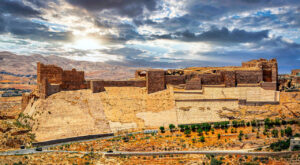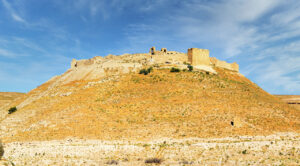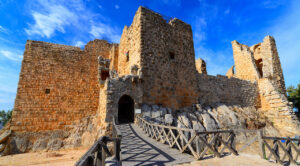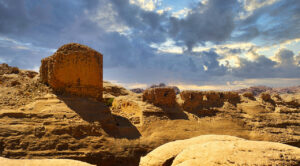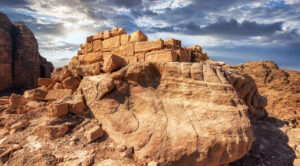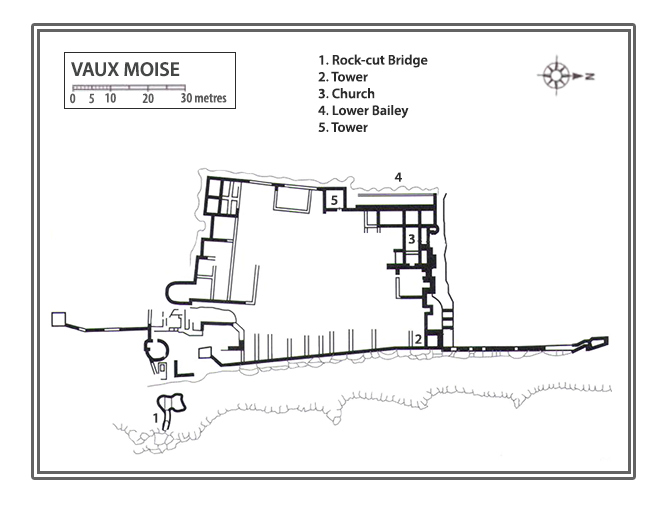Vaux Moise (Al Wu‘eira) is a small crusader castle founded by Baldwin I of Jerusalem in 1116 as an outpost of the larger crusader castle at Shobak (Montreal), to control the trade and communication route between Cairo and Damascus. It stands on a narrow ridge with smooth sides by the well-watered valley of Wadi Musa, just outside the ancient city of Petra.
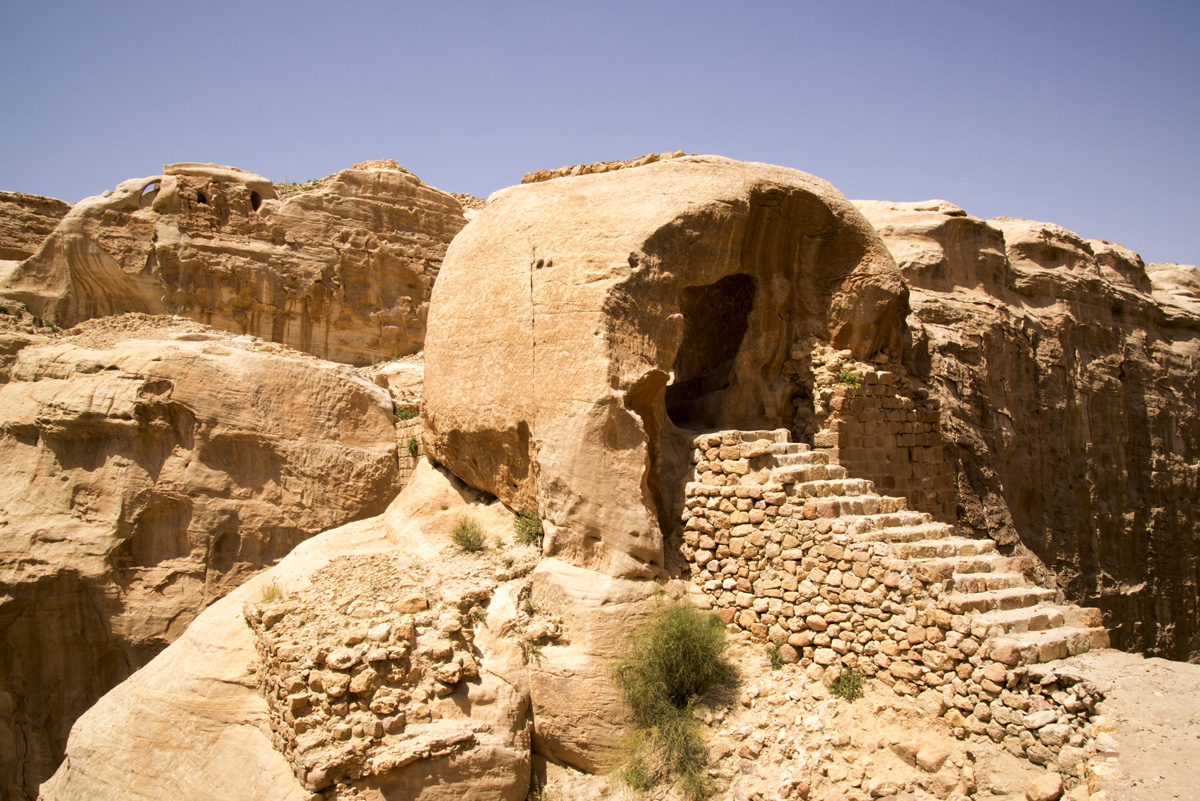
The surviving building is all twelfth-century work and is quite remarkable in its construction. In the wilderness of lumpy, weirdly eroded rocks, the Crusaders chose a ridge separated from the surrounding massif by sheer precipices. They improved this isolation by smoothing the rocks so that an attacker could not possibly find any hand or footholds. The only access was across a single narrow bridge, completely overlooked by the walls of the castle. Guarding this bridge stands the most remarkable architectural feature of the defences, a gatehouse carved out of the solid rock. The red sandstone of nearby Petra is, of course, famous for its rock-cut buildings. Whether knowingly or not, the Crusaders followed the ancient tradition and hollowed out a gatehouse cave, complete with benches along each side.
The fortifications cling precariously to the edge of the cliffs which surround them on every side and consist of a double line of defence, in which the mould, the core of the system, is located to the east. The masonry is of fairly small, squared and coursed stones which comprise a curtain wall. The basic plan is a rectangular enclosure, approximately 100 X 35 m, with traces of chambers on the insides of some of the walls.
The complex fortified church, which is accessed from the south side, is at the top of a ramp where there is also the burial area and cross-protection is set to access the main water tank site. The few towers are square but are provided with arrow slits, and one of them, in the centre of the south wall, could be described as a donjon.
Outside the main body of the fort, there are remains of watchtowers perched on isolated outcrops and connected to the centre by rock-cut paths and stairs. The architecture is not grand but curiously impressive in this remote landscape. It was militarily very effective.
Today, one can visit the castle, it’s only 1.5 km from the Petra visitor centre, but unfortunately, there is no sign on the road so you would need to use GPS or google maps to locate the castle’s precise location.

The stronghold over Wadi Musa was built in 1116 under the reign of King Balduin I of Jerusalem on the remains of a Nabataean or Roman predecessor and was strongly extended in 1142. The works in Oultrejourdain were Baldwin I’s most important surviving foundations. His successor Baldwin II (1118-31) does not seem to have been a great castle builder.
In 1144 it was taken by a surprise attack by Turks and the young Baldwin III was only able to retake it for the Crusaders by alternative means. The king left a new garrison to defend this lonely spot and they held it against an Egyptian expedition in 1158 but, like all the Crusader fortresses in Oultrejourdain, it fell to the Muslims in 1188 after the defeat at Hattin.
The Ayyubids downgraded the status of Vaux Moise, and there is evidence for increased domestic occupation as well as industrial activity on the site.
